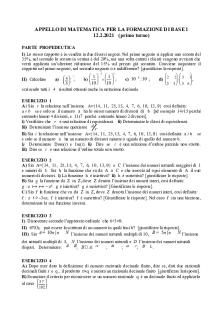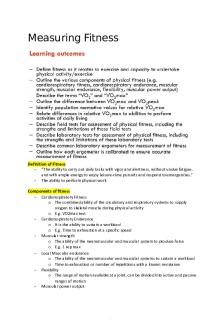Fractals in Chemistry (Rothschild, Walter G.) PDF

| Title | Fractals in Chemistry (Rothschild, Walter G.) |
|---|---|
| Author | Richard Pagni |
| Pages | 1 |
| File Size | 39.5 KB |
| File Type | |
| Total Downloads | 113 |
| Total Views | 313 |
Summary
Chemical Education Today Book & Media Reviews ces and two glossaries. The subject matter is diverse, dealing with, Fractals in Chemistry for example, fractal theory, a necessity for a book devoted to by Walter G. Rothschild the applications of fractals, adsorption, porosity, aggregation, Wiley: ...
Description
Ch e m ica l Ed u ca tio n To d a y
Book & M edia Review s Fra cta ls in Chem istr y by W alter G . Ro thschild W iley: N ew Yo rk, 1 9 9 8 . 2 3 1 pp. ISBN 0 -4 7 1 -1 7 9 6 8 -X. $ 6 9 .9 5 .
Downloaded via 54.161.69.107 on June 18, 2020 at 06:11:37 (UTC). See https://pubs.acs.org/sharingguidelines for options on how to legitimately share published articles.
reviewed b y Richa rd M. Pa g ni
Millennia ago civilizations such as those in Egypt and Mesopotamia invented geometry for practical reasons. T hey wanted to redetermine, for example, the boundaries of a field after a flood had abated. T he classical Greeks as exemplified by Archimedes and Euclid, on the other hand, were driven by curiosity and developed geometry for its own sake. Regardless of how it originated, it is fair to say that this idealized and still very useful Euclidean geometry deals with objects and functions that have smooth edges, lines and surfaces. Objects in the real world are rarely ideal, however. Several decades ago Mandelbrot invented a geometry to deal with “rough” edges, lines, and surfaces, which he called fractal geometry. In this geometry, which is well suited to deal with many real—and abstract—objects, non-integer (i.e., fractional) dimensions occur. Scientists realized immediately that they could profitably apply this new paradigm to a large number of previously poorly understood phenomena. T he success of this approach is underscored by the dozens of books on fractals that have been written in the intervening period, covering topics such as geology, botany, physics, astronomy, environmental science, and, not surprisingly, chemistry. Rothschild’s Fractals in Chemistry is the latest book on fractals devoted to chemistry. T his small, attractive, almost error-free volume is divided into eight chapters, each richly adorned with figures and equations and an extensive tabulation of notes and references for further reading, and three appendi-
ces and two glossaries. The subject matter is diverse, dealing with, for example, fractal theory, a necessity for a book devoted to the applications of fractals, adsorption, porosity, aggregation, kinetics, diffusion, spectroscopy, photochemistry, and chemical degradation. As these topics suggest, the book is very physically oriented. If one is looking for a leisurely-paced or watered-down book on fractal applications, this book is not for you. It is concisely written and aimed at professional chemists interested in learning how fractals may be useful in their research and graduate students with considerable experience in physical chemistry. It covers a large number of topics, only some of which may be familiar to the reader. A reader must be prepared to learn the methods and terminology of fractal geometry, which may seem strange and off-putting at first, and of each topic under consideration. T he author, who clearly loves this subject, brings much to this book. He is authoritative and practical and writes well. He never hesitates to tell the reader what published results really mean and when a given method has been oversold. He chooses carefully his examples and the close to one hundred figures, most of which have come from the chemical literature. (T he figures are, in my opinion, the highlight of the book.) T he author presents many mathematical equations not for their own sake but to help the reader master the principles by which fractal methodology can be applied to real problems. T his book is an interesting addition to the fractal literature. If you are seeking a concise, up-to-date, authoritative, practical guide to fractal applications in chemistry, consider it seriously. Keep in mind, however, that it will make considerable demands on you.
Richard M. Pagni is in the Department of Chemistry, University of Tennessee, Knoxville, TN 37996
JChemEd.chem.wisc.edu • Vo l. 7 7 N o . 3 March 2 0 0 0 • Jo urnal o f Chemical Educatio n
315...
Similar Free PDFs

Rothschild Stiglitz model notes
- 3 Pages

Rothschild Stiglitz Model
- 1 Pages

Mathematics in Chemistry
- 6 Pages

Chemistry IN LIFE
- 4 Pages

John Leyba In Chemistry
- 6 Pages

Walter Benjamin
- 25 Pages

Assignment 1 - g g
- 3 Pages

Riso Walter Deshojando Margaritas
- 78 Pages

Pc2 recreacion - WALTER CALDERON
- 2 Pages

Infografía de Walter Gropius
- 1 Pages
Popular Institutions
- Tinajero National High School - Annex
- Politeknik Caltex Riau
- Yokohama City University
- SGT University
- University of Al-Qadisiyah
- Divine Word College of Vigan
- Techniek College Rotterdam
- Universidade de Santiago
- Universiti Teknologi MARA Cawangan Johor Kampus Pasir Gudang
- Poltekkes Kemenkes Yogyakarta
- Baguio City National High School
- Colegio san marcos
- preparatoria uno
- Centro de Bachillerato Tecnológico Industrial y de Servicios No. 107
- Dalian Maritime University
- Quang Trung Secondary School
- Colegio Tecnológico en Informática
- Corporación Regional de Educación Superior
- Grupo CEDVA
- Dar Al Uloom University
- Centro de Estudios Preuniversitarios de la Universidad Nacional de Ingeniería
- 上智大学
- Aakash International School, Nuna Majara
- San Felipe Neri Catholic School
- Kang Chiao International School - New Taipei City
- Misamis Occidental National High School
- Institución Educativa Escuela Normal Juan Ladrilleros
- Kolehiyo ng Pantukan
- Batanes State College
- Instituto Continental
- Sekolah Menengah Kejuruan Kesehatan Kaltara (Tarakan)
- Colegio de La Inmaculada Concepcion - Cebu

![Quantization energy lab report er g g g g g g g g g g g g g g g g g g g g g g]\\](https://pdfedu.com/img/crop/172x258/og2v1qo08824.jpg)



